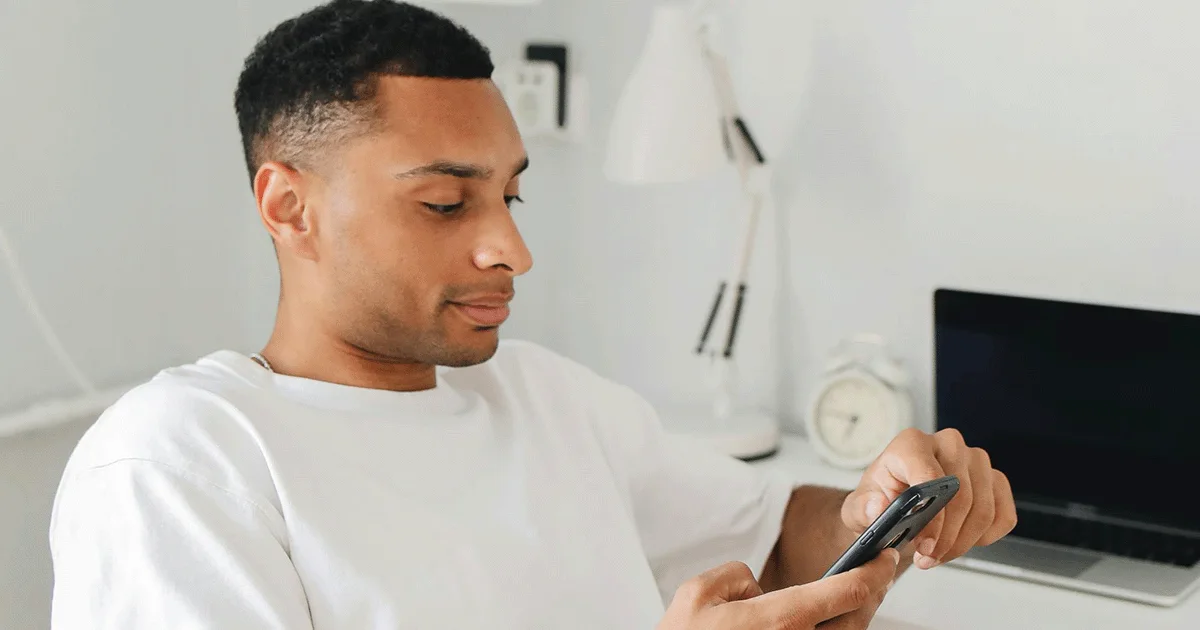Here's what we'll cover
Here's what we'll cover
If you’ve spent any time online recently you’ve probably heard of Ozempic. Ozempic (semaglutide) is the type 2 diabetes medication that’s gone viral on TikTok and social media. In addition to helping people control their blood sugar levels, Ozempic also produces significant weight loss.
Ozempic’s weight loss effects are noteworthy on their own, but the drug continues to enjoy social media fame due to alleged side effects like Ozempic dreams and Ozempic face. The latest to grab the internet’s attention is "Ozempic butt."
What Is ‘Ozempic Butt?’
"Ozempic butt" describes the deflated, sagging, or wrinkled appearance your rear end can take on whenever you lose significant weight. Like “Ozempic face”, "Ozempic butt" is not a direct result or side effect of using Ozempic. Rather, "Ozempic butt" can occur with any kind of significant or rapid weight loss, Ozempic or no Ozempic.
You may also hear "Ozempic butt" called “Wegovy butt.” Wegovy is a prescription weight loss medication that contains the same active ingredient as Ozempic, semaglutide.
Ozempic Important Safety Information: Read more about serious warnings and safety info.
Wegovy Important Safety Information: Read more about serious warnings and safety info.
What causes ‘Ozempic Butt?’
Beneath your skin lies a layer of subcutaneous fat. Over the years, your skin stretches to cover this fat as you put on weight. But, once you lose a lot of weight quickly — whether from bariatric surgery, diet and exercise, or weight loss medications like Ozempic — you lose a lot of fat, too. And, critically, you lose that fat at a faster rate than your skin takes to bounce back. As a result, you end up with skin that can look deflated or wrinkled, since it is now larger than the volume of fat it used to cover.
Significant weight loss leads to a less voluminous and flatter derriere. But, the appearance of "Ozempic butt" is not unique to Ozempic, or even the gluteus maximus, for that matter. Significant weight loss can lead to excess skin in any of the curvier areas of the body, including your lower belly, thighs, breast, upper arms, and armpits. Because people often lose weight when taking Ozempic, they may notice they’re developing an "Ozempic butt."
As a diabetes medication, Ozempic helps people control their blood sugar levels by encouraging insulin release after eating. The active ingredient in Ozempic — semaglutide — mimics a gut hormone called GLP-1. In addition to influencing insulin release, GLP-1 also delays gastric emptying, so it takes longer for food to leave your stomach. GLP-1 also sends signals to your brain that tell you you’re full, influencing your cravings for certain foods. As a result, people on Ozempic tend to feel less hungry, crave fatty foods less, and lose weight.
In one 12-week study, people taking Ozempic ate nearly 25% less calories overall. When combined with a reduced-calorie diet and increased physical activity, people can lose an average of 7% of their body weight in 1 year. People taking Wegovy, which has higher dosage strengths than Ozempic, tend to lose even more weight.
This weight loss is significant enough to provide major health benefits, from lower blood pressure and cholesterol to a reduced risk of diabetes and improved body image and self-esteem. But, it’s also enough to potentially cause saggy skin and "Ozempic butt."
Who can experience ‘Ozempic Butt?’
Anyone can experience "Ozempic butt," but some people may be more likely than others. As we age, so does our skin. Less blood flow reaches your skin, causing more wrinkles. So, older people may be more likely to notice a loss of firmness and elasticity in their bums than younger people.
Your likelihood of experiencing "Ozempic butt" may also depend on how long you have been overweight. With more weight gain, and subsequent weight loss, the larger the difference in your butt’s fat volume becomes — leading to a flatter appearance and more excess skin. In people with obesity, the skin has spent years being stretched out to cover larger volumes of fat. That causes it to lose some of its elasticity, so when you lose a lot of weight, it doesn’t spring back quite as quickly as you might like.
Finally, genetics can play a role. Depending on their body type, some people are more prone to fat deposits or excess skin. Pear-shaped bodies may be more likely to retain more fat in their butt and thigh area, while apple-shaped bodies may hold onto more fat in their torso.
How to treat saggy skin
When you weigh it against the health benefits of weight loss, some saggy skin is worth it. But, it can still be frustrating and demoralizing, especially after you’ve made serious changes to lose weight and live a healthier lifestyle. Here are seven ways to treat saggy skin back there.
1. Be patient
Your skin is elastic. That’s one of the many wonderful things about it. With time, if you maintain your weight loss, your skin may correct itself to some degree and slowly reform to fit your new body shape.
2. Stay hydrated
Drinking more water is a big part of staying healthy. Not only does it keep us alive, but some studies have found that drinking more water correlates to weight loss.
Water also keeps your skin looking healthy. Research suggests that increased water intake boosts skin elasticity and hydration. It can even help it bounce back faster. If drinking water is a chore, add fresh fruit slices for more flavor.
3. Build muscle
It’s not just the sagging skin, but the flatness of an "Ozempic butt" that upsets people. So, bulk up your booty with exercise. Ozempic is recommended to be used with increased exercise anyway.
Specifically, focus on incorporating more strength and resistance training. From lifting weights to using your own body weight, these types of exercises build muscle, which can help with boosting metabolism and building a more voluminous butt. Research shows the following exercises maximize the gluteus maximus:
Hip thrusts
Deadlifts
Lunges
Step-ups
For an extra challenge, try doing these exercises with barbells or weights.
4. Eat more protein
Get the most from your workouts by eating more protein. Not only does protein help you feel full, leading to weight loss, but it also helps you lose weight without losing muscle. Rather, protein helps you build muscle and burn more calories.
You can find protein in meat, dairy, and plant-based sources like nuts and tofu.
5. Eat skin-boosting nutrients
If you’re taking Ozempic, you’ve likely already made some changes to your diet. Make sure that your new diet includes skin-boosting vitamins, like vitamins A, C, and E. These vitamins can help fight sagging or wrinkly skin by boosting collagen and elastin, contributing to thicker and more elastic skin.
You can find vitamin A in meat, egg yolks, butter, and some fish. Vitamin C shows up in a ton of citrus fruits and leafy greens, while many nuts and plant-based oils contain vitamin E.
6. Protect your skin
The skin on your butt may not need as much protection as your face and hands, but you can still take extra steps to promote its health.
Avoid exposing your butt to things that prematurely age your skin, like the sun, pollution, and smoking. Keep your bum covered up at the beach, and stop smoking.
Treat your butt to skin-restoring with body creams that contain retinol (vitamin A), as well as vitamins C and E. Try water-based body lotion for an extra boost of hydration.
7. Explore surgical options
Dermatological procedures and skin tightening treatments can also help with saggy butt skin. In general, surgery is only needed in cases where someone has quickly lost 100 pounds or more — such as those who underwent bariatric surgery.
For people in these situations, health professionals may recommend skin excision (removal) surgery to remove loose skin. A Brazilian butt lift with dermal fillers can also help restore volume in the butt.
Other side effects of Ozempic
The most common side effects of Ozempic are gastrointestinal. For most people, these range from mild to moderate, and go away once your body gets used to the medication. They may include:
Nausea
Vomiting
Diarrhea
Abdominal pain
Constipation
Other, less common side effects may include upset stomach, burping, flatulence, gastroesophageal reflux disease (GERD), and gastritis (stomach inflammation). In rare cases, serious side effects can occur with Ozempic, including an allergic reaction, pancreatitis, diabetic retinopathy (vision changes), hypoglycemia (low blood sugar), and kidney or gallbladder problems.
If you have concerns about experiencing side effects on Ozempic, talk to your healthcare provider.
DISCLAIMER
If you have any medical questions or concerns, please talk to your healthcare provider. The articles on Health Guide are underpinned by peer-reviewed research and information drawn from medical societies and governmental agencies. However, they are not a substitute for professional medical advice, diagnosis, or treatment.
Ballin, A. C., Brandt, F. S., & Cazzaniga, A. (2015). Dermal fillers: an update. American Journal of Clinical Dermatology, 16(4), 271–283. doi: 10.1007/s40257-015-0135-7. Retrieved from https://pubmed.ncbi.nlm.nih.gov/26081021/
Blundell, J., Finlayson, G., Axelsen, M., et al. (2017). Effects of once-weekly semaglutide on appetite, energy intake, control of eating, food preference and body weight in subjects with obesity. Diabetes, Obesity & Metabolism, 19(9), 1242–1251. doi: 10.1111/dom.12932. Retrieved from https://www.ncbi.nlm.nih.gov/pmc/articles/PMC5573908/
Boswell, C. B. (2010). Body contouring following massive weight loss. Missouri Medicine, 107(3), 189–194. Retrieved from https://www.ncbi.nlm.nih.gov/pmc/articles/PMC6188338/
Frías, J. P., Auerbach, P., Bajaj, H. S., et al. (2021). Efficacy and safety of once-weekly semaglutide 2·0 mg versus 1·0 mg in patients with type 2 diabetes (SUSTAIN FORTE): a double-blind, randomised, phase 3B trial. The Lancet. Diabetes & Endocrinology, 9(9), 563–574. doi:10.1016/S2213-8587(21)00174-1. Retrieved from https://pubmed.ncbi.nlm.nih.gov/34293304/
Gerut, Z. E. (2006). Post-Bariatric Buttock Contouring with Autogenous Tissue Augmentation. Seminars in Plastic Surgery, 20(1), 30–37. doi:10.1055/s-2006-932447. Retrieved from https://www.ncbi.nlm.nih.gov/pmc/articles/PMC2884759/
Langer, V., Singh, A., Aly, A. S., et al. (2011). Body contouring following massive weight loss. Indian Journal of Plastic Surgery: Official Publication of the Association of Plastic Surgeons of India, 44(1), 14–20. doi:10.4103/0970-0358.81439. Retreived from https://www.ncbi.nlm.nih.gov/pmc/articles/PMC3111107/
Lasikiewicz, N., Myrissa, K., Hoyland, A., et al. (2014). Psychological benefits of weight loss following behavioural and/or dietary weight loss interventions. A systematic research review. Appetite, 72, 123–137. doi: 10.1016/j.appet.2013.09.017. Retrieved from https://www.sciencedirect.com/science/article/pii/S0195666313003991
Leidy, H. J., Clifton, P. M., Astrup, A., et al. (2015). The role of protein in weight loss and maintenance. The American Journal of Clinical Nutrition, 101(6), 1320S–1329S. doi:10.3945/ajcn.114.084038. Retrieved from https://academic.oup.com/ajcn/article/101/6/1320S/4564492
Liska, D., Mah, E., Brisbois, T., et al. (2019). Narrative review of hydration and selected health outcomes in the general population. Nutrients, 11(1), 70. doi:10.3390/nu11010070. Retrieved from https://www.ncbi.nlm.nih.gov/pmc/articles/PMC6356561/
Michalak, M., Pierzak, M., Kręcisz, B., et al. (2021). Bioactive Compounds for Skin Health: A Review. Nutrients, 13(1), 203. doi:10.3390/nu13010203. Retrieved from https://www.ncbi.nlm.nih.gov/pmc/articles/PMC7827176/
Neto, W. K., Soares, E. G., Vieira, T. L., et al. (2020). Gluteus Maximus Activation during Common Strength and Hypertrophy Exercises: A Systematic Review. Journal of Sports Science & Medicine, 19(1), 195–203. Retrieved from https://www.ncbi.nlm.nih.gov/pmc/articles/PMC7039033/
Rodan, K., Fields, K., Majewski, G., et al. (2016). Skincare bootcamp: the evolving role of skincare. Plastic and Reconstructive Surgery. Global Open, 4(12 Suppl Anatomy and Safety in Cosmetic Medicine: Cosmetic Bootcamp), e1152. doi:10.1097/GOX.0000000000001152. Retrieved from https://www.ncbi.nlm.nih.gov/pmc/articles/PMC5172479/
Singh, G., Krauthamer, M., & Bjalme-Evans, M. (2022). Wegovy (semaglutide): a new weight loss drug for chronic weight management. Journal of Investigative Medicine: The Official Publication of the American Federation for Clinical Research, 70(1), 5–13. doi:10.1136/jim-2021-001952. Retrieved from https://www.ncbi.nlm.nih.gov/pmc/articles/PMC8717485/
Strasser, B. (2013). Physical activity in obesity and metabolic syndrome. Annals of the New York Academy of Sciences, 1281(1), 141–159. doi:10.1111/j.1749-6632.2012.06785.x. Retrieved from https://www.ncbi.nlm.nih.gov/pmc/articles/PMC3715111/
U.S. Food and Drug Administration (FDA). (2022). OZEMPIC (semaglutide) injection, for subcutaneous use. Retrieved from https://www.accessdata.fda.gov/drugsatfda_docs/label/2022/209637Orig1s009lbl.pdf











